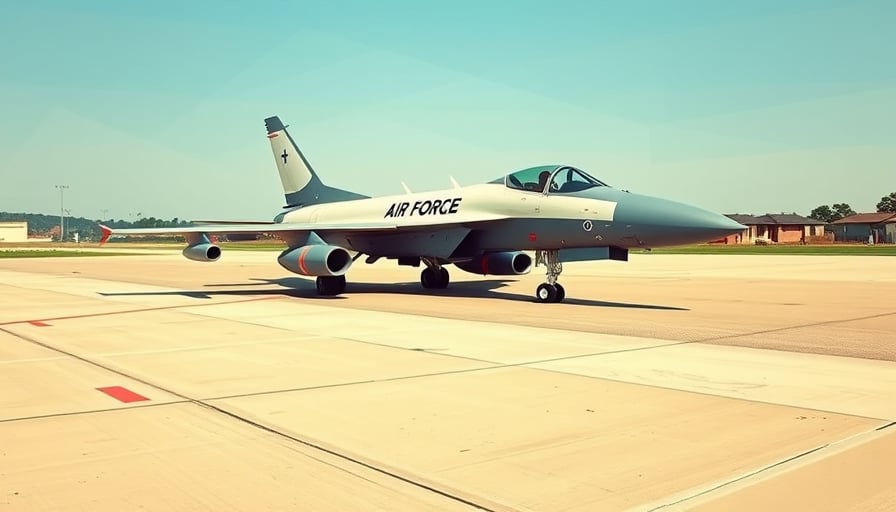Lockheed Martin Corp: Recent Strategic Moves and Market Dynamics
Lockheed Martin Corp (NYSE: LMT) has continued to solidify its position as the preeminent provider of integrated defense solutions, while navigating a complex mix of procurement opportunities and shareholder expectations. The company’s latest activities underscore its commitment to enhancing U.S. air and missile defense capabilities, strengthening supply‑chain resilience, and expanding international reach.
1. Integrated Fires Protection Capability (IFPC) 2nd Interceptor OTA Agreement
On 16 October 2025, the U.S. Army awarded Lockheed Martin an Integrated Fires Protection Capability (IFPC) 2nd Interceptor Other Transaction Authority (OTA) Project Agreement. This arrangement positions the company as the prime contractor for a critical air‑defense system that will bolster the Army’s layered defense architecture. The OTA framework allows for accelerated development timelines, cost‑effective procurement, and tighter integration with existing Army platforms. The award not only enhances Lockheed’s portfolio in kinetic interception but also reinforces the firm’s long‑term partnership with the Army.
2. F‑35 Arrival in Belgium
The same day, Lockheed Martin celebrated the arrival of Belgium’s first F‑35A Lightning II aircraft at Florennes Air Base. The event marked a milestone in the company’s European footprint and underscored its role in supporting the interoperability of NATO air forces. The F‑35 program continues to be a cornerstone of Lockheed’s revenue stream, with sustained demand across allied nations.
3. Supply‑Chain Resilience Initiatives
Earlier in the month, Lockheed Martin announced collaborative efforts to expedite solid‑rocket motor development in partnership with General Dynamics. This joint initiative aims to secure a robust domestic supply chain for missile propulsion components, reducing exposure to geopolitical risks. In parallel, a memorandum of understanding with Diehl Defence was signed to explore integration opportunities in the Integrated Air and Missile Defense (IAMD) arena. These partnerships signal a strategic emphasis on self‑reliance and cross‑industry synergies.
4. Spike Non‑Line‑of‑Sight (NLOS) Advancement
The U.S. Army selected Lockheed Martin’s Spike NLOS system for Phase 2 of the Mobile‑Long‑Range Precision Strike (M‑LRPSM) competition. The Spike NLOS represents a next‑generation, beyond‑visual‑range precision strike capability that can operate in contested environments. Its adoption demonstrates Lockheed’s continued innovation in precision munitions and underscores its role in shaping the future of battlefield logistics.
5. Shareholder Pressures and Buyback Outlook
Despite these operational successes, Lockheed Martin’s shares experienced a modest decline on 15 October 2025. Treasury Secretary Scott Bessent’s comments about potential constraints on corporate buybacks amid delivery shortfalls contributed to a short‑term dip. Analyst sentiment reflected this volatility; Morgan Stanley increased its price target to $630, while Truist Securities revised its own target upward, indicating confidence in the company’s long‑term valuation.
6. Market Context
As of 14 October 2025, Lockheed’s closing price stood at $499.41, positioned 18 % below its 52‑week high of $618.95 and 9 % above its 52‑week low of $410.11. With a market capitalization exceeding $118 billion and a price‑earnings ratio of 28.271, the stock remains a high‑growth asset within the Industrials sector. The firm’s diversified operations across aerospace, defense, and space services continue to underpin its resilient revenue base.
7. Forward Outlook
Lockheed Martin’s recent contract wins and supply‑chain initiatives suggest a trajectory of steady growth driven by defense spending and technological innovation. The OTA agreement for IFPC 2nd Interceptor and the Spike NLOS phase‑2 selection reinforce the company’s leadership in air defense. Coupled with a robust pipeline of international orders, such as the Belgian F‑35 deployment, Lockheed is well‑positioned to capture the evolving demand for advanced military capabilities. While shareholder buyback expectations may face temporary constraints, the firm’s long‑term strategic investments and partnership ecosystem bode well for sustained shareholder value.
This analysis synthesizes publicly available corporate announcements and market commentary to provide a comprehensive view of Lockheed Martin Corp’s recent developments and their implications for investors and industry stakeholders.
